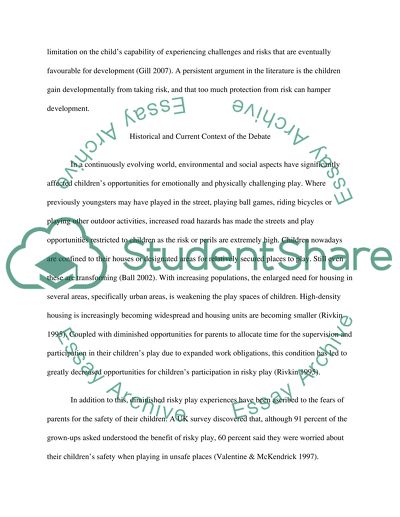Cite this document
(“How does an early years setting ensure children are safe versus their Essay”, n.d.)
How does an early years setting ensure children are safe versus their Essay. Retrieved from https://studentshare.org/miscellaneous/1567402-how-does-an-early-years-setting-ensure-children-are-safe-versus-their-need-for-risky-play
How does an early years setting ensure children are safe versus their Essay. Retrieved from https://studentshare.org/miscellaneous/1567402-how-does-an-early-years-setting-ensure-children-are-safe-versus-their-need-for-risky-play
(How Does an Early Years Setting Ensure Children Are Safe Versus Their Essay)
How Does an Early Years Setting Ensure Children Are Safe Versus Their Essay. https://studentshare.org/miscellaneous/1567402-how-does-an-early-years-setting-ensure-children-are-safe-versus-their-need-for-risky-play.
How Does an Early Years Setting Ensure Children Are Safe Versus Their Essay. https://studentshare.org/miscellaneous/1567402-how-does-an-early-years-setting-ensure-children-are-safe-versus-their-need-for-risky-play.
“How Does an Early Years Setting Ensure Children Are Safe Versus Their Essay”, n.d. https://studentshare.org/miscellaneous/1567402-how-does-an-early-years-setting-ensure-children-are-safe-versus-their-need-for-risky-play.


